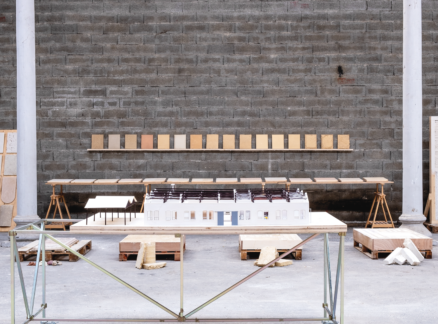
May 17, 2017
So You Want to Build A Wall?
So you say the U.S.–Mexico border wall is not the same thing as the Iron Curtain. But both are symbols of a massive failure to negotiate humane resolutions to complex problems.

As I read the debates between architecture and construction firms—whether they should or should not put their expertise toward expanding the wall between Mexico and the U.S.—I flash back to another wall. That wall, assembled as massive structures of super-steep earthworks topped with barbed wire and lookout towers occupied by armed guards, became a reality of life and an inescapable symbol of entrapment for Eastern Europe, from the Baltic to the Adriatic. The Iron Curtain, as Winston Churchill described the fortified edges of the new Soviet empire in 1946, was part of a massive system put in service to control our ideas, our movements, and even more damaging, our hopes and dreams—all that makes us human.
Even as a small child in Hungary, I was aware of these controls. I listened to my parents speaking in hushed tones about my college-student cousin’s imprisonment and torture for protesting, as well as to the screeching interference that obliterated Radio Free Europe broadcasts. Then there were the breadlines that netted putrid loaves—all dramatic reminders of our entrapment and deprivation. In contrast to these horrific realities, my grade school assembled us every day to sing happy songs that condemned American aggressions.
When fellow Hungarians, starting with college students, began protesting in Budapest, this marked the beginning of the Hungarian Uprising of 1956. As the power of optimistic voices resonated in public squares, it seemed for a moment that a small outpost of the massive Soviet empire had successfully challenged the tyrants. A week of heady freedom ensued. Then everything swiftly ground to a halt as Soviet tanks rolled into our capital city, the border walls began to be reactivated, and the revolutionary leaders were rounded up, jailed, and executed. When my father’s name appeared in a local paper that listed the supposed leaders of our region’s uprising, it was time to leave home.
I confronted that earthworks wall built between Hungary and Austria at dusk on a cold, clear day in November. My family was guided by a local farmer with the last of our money in his pocket, across a sturdy tree trunk that served as a bridge to the unknown. The brook’s muddy water rushed underneath us as we crawled along the makeshift bridge, somehow concealed from the armed guards above.
Our journey to the West was supported by the kindness of strangers: the people of Austria and U.S. president Dwight D. Eisenhower, whose executive order directed the armed services to provide safe and rapid passage for those of us who sought asylum in America, the place my father had dreamed about for at least ten years.
So you say the U.S.–Mexico border wall is not the same thing. But I argue that both the Iron Curtain and the Mexican border wall are symbols of a massive failure to negotiate humane resolutions to complex problems. Be they built to keep people in or keep them out, walls signify one group attempting to control another group, which in the long run is doomed to fail while causing immense misery in the process.
The reasons people cross borders are as human as walls are inhuman. Whether they’re seeking economic or political freedom or, more than likely, both, people yearn for a better future for their children and themselves. By escaping oppression and poverty, they hope to find a place where they don’t need to listen for the secret-police car stopping in the middle of the night or watch their kids go hungry.
We are complex creatures, not one-liners to be put in our places. We seek love, thrive on hope, celebrate accomplishments, want to trust each other, and want to work together to build a better, safer, cleaner world. Walls are built to stop these very human impulses.
Recent Viewpoints
Viewpoints
Sustainability News Updates for Q2 2025





